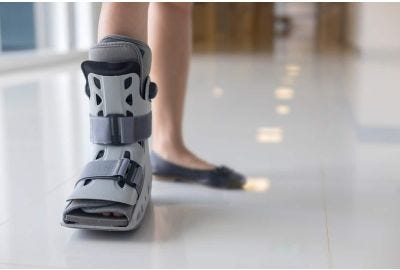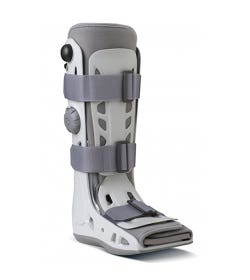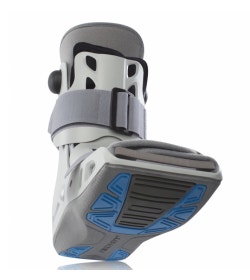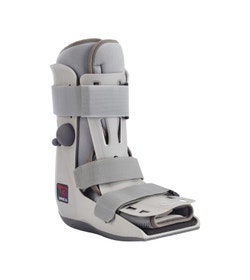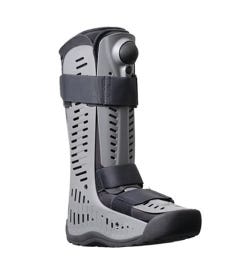Reviewed for 2024
Medical Walking Boot Basics
A medical walking boot is a specialized type of footwear that is commonly used to support the foot and ankle during the healing process after an injury. Also known as walking casts, air casts, fracture boots or a CAM (Controlled Ankle Motion) boot; these medical boots are designed to immobilize (or restrict movement) of the calf, ankle, foot, or even all three areas.
Medical boots are used to treat a wide range of conditions such as Plantar Fasciitis / Heel Pain, Ball of Foot Pain, Ankle Sprain, Metatarsal Stress Fracture, Toe Fracture, Foot Fracture, Ankle Fracture and Tendonitis.
Walking boots allow you to rest and protect your foot / ankle while still walking around and doing your day to day activities. Whether you have a sprained ankle or are recovering from surgery, a good medical walking boot can help to reduce pain and promote healing. However, with so many different types of medical walking boots on the market, it can be tough to know which one to choose. In this blog post, we’ll provide some tips on how to select the best medical walking boot, with examples of products available from OrthoMed.
Tips For Selecting a Medical Walking Boot
Tip #1: Pick The Medical Walking Boot That Best Matches Your Diagnosis, Measurements, and Lifestyle
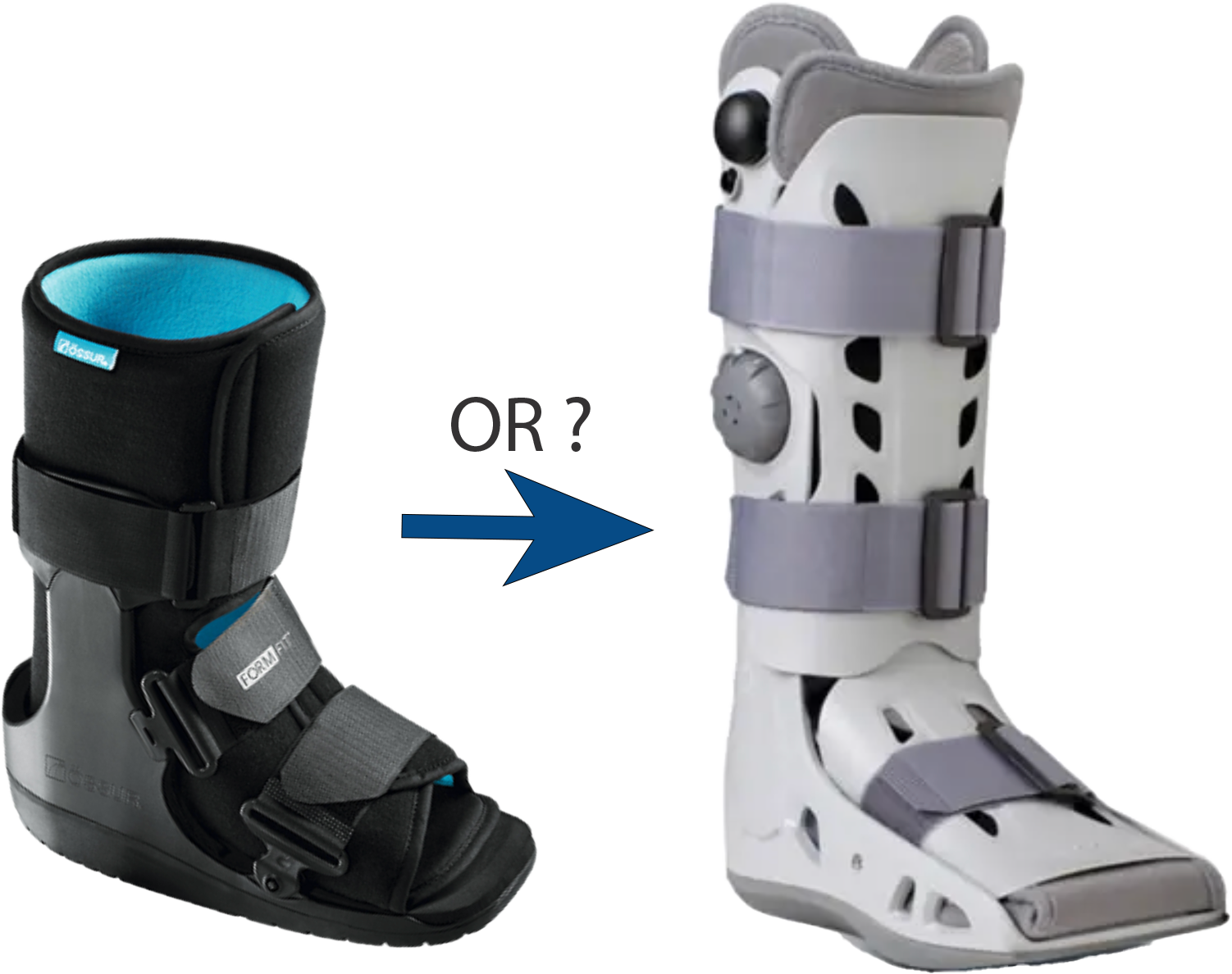

Consider the level of support you need: Soft, Semi-rigid, or Rigid Full Shell
Picking the corrrect medical walking boot isn't about style! The type of boot you require and the level of support you need from your medical walking boot will depend on the nature and severity of your injury. In general, softer more flexible boots with only 'half' or partial shells will be appropriate for less serious injuries. More rigid, 'full shell' designs are better for more severe injuries. For example, if you have a minor sprain or strain, you may only need a basic walking boot with a soft liner and minimal support, like the Ossur Formfit Walker Boot. On the other hand, if you have a more serious injury, such as a fracture (or grade III ankle sprain), you may need a boot with a more rigid shell, additional straps, fastenings and aircells (also called a pneumatic bladder) to keep your foot and ankle secure: such as the Aircast AirSelect Elite. Most brands (and models) are offered in both a short and tall version, you can read more in the section below on short vs. tall boots.
Consider the fit and comfort
A good medical walking boot should fit snugly and comfortably to minimize movement and protect your foot and ankle. So don't just borrow your friends old medical boot! A boot that doesn't fit you properly may make your injury worse by allowing too much (or too little) movement, and not properly holding the foot and ankle in the corect position. Make sure you get a boot that is sized correctly for you: measure your foot and ankle and choose the appropriate size based on the manufacturer’s sizing chart (found in size chart tab in our product pages). Sizes are also available for children, you can view paediatric medical boots here. Look for boots with adjustable straps and fasteners so that you can customize the fit to your individual needs. Also, consider if you need other accessories, like a shoe balancer, that help balance your hips when you walk.
Consider the durability and quality
A medical walking boot is an investment in your recovery, so it’s important to choose a high-quality product that will last. Look for a medical walking boot with a sturdy, well-constructed shell and a durable liner that won’t wear out quickly. OrthoMed offers a range of walking boots made from high-quality materials, many feature lightweight (yet durable) plastic shells and soft, breathable liners that wick away moisture.
Consider the ease of use and convenience
Finally, consider how easy it will be to use and maintain your medical walking boot. Look for a boot with an easy-to-use closure system that won’t require assistance from others, with simple, one-handed inflation systems. Also, consider how easy it will be to clean and maintain your medical walking boot, especially if you’ll be wearing it for an extended period of time. OrthoMed offers a range of walking boots that are easy to use and maintain, with removable liners that can be washed and dried. We also have replacement liners and parts: you can view medical boot accessories here.
Tip #2: Short vs. Tall Medical Walking Boots
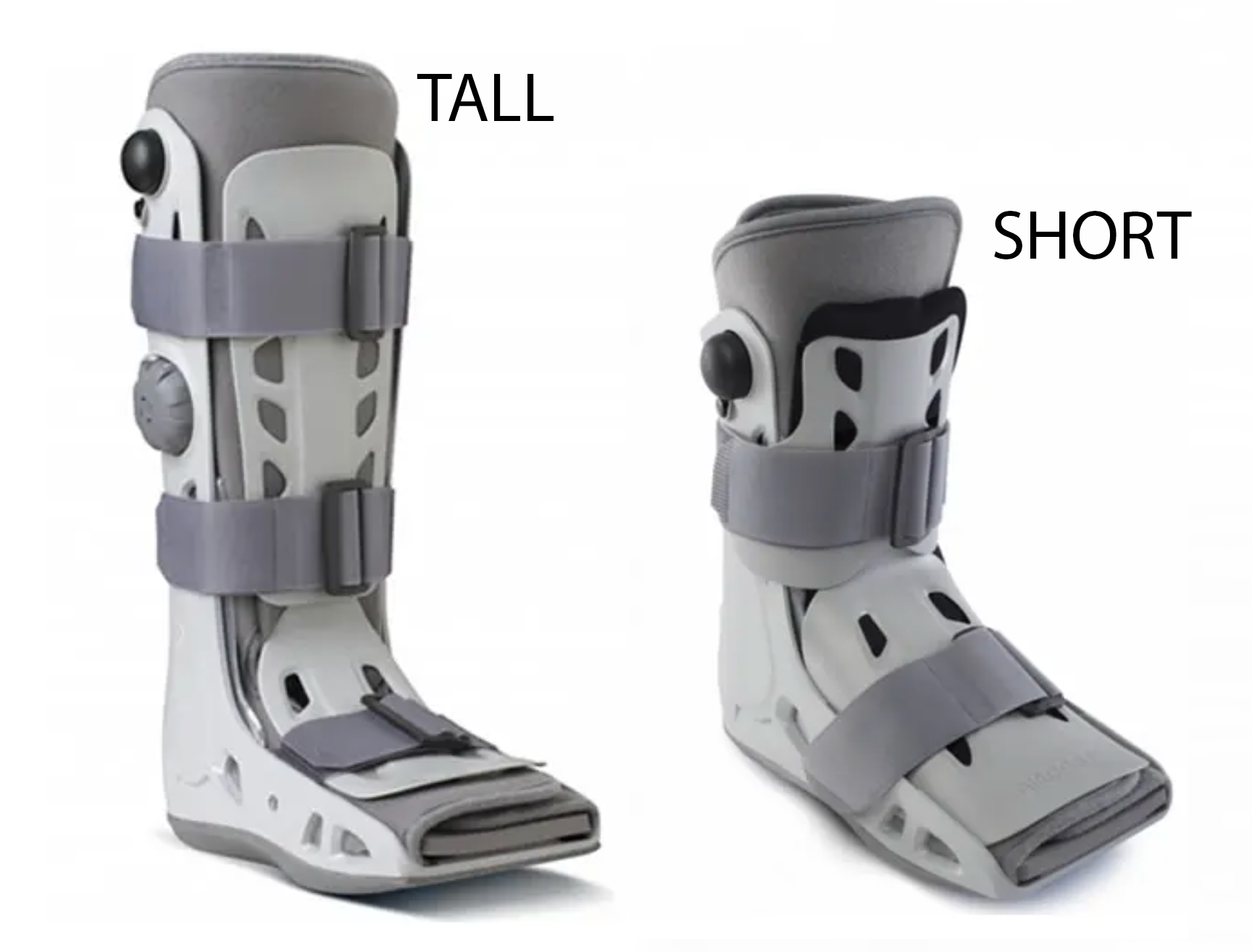

Another important consideration when selecting a medical walking boot is whether to choose a short or tall boot. Both types of boots have their advantages and are designed for different types of injuries.
Short walking boots, also known as low-top walking boots, provide support for the foot while allowing for greater mobility and flexibility in the ankle. They are ideal for foot injuries (trauma, fractures) where the focus is on stabilizing the joint and preventing further damage. Fracture locations that are suitable for a short boot would be fractures of the toes, and fracture of the bones (metatarsals) just before the toes (the distal 1/3rd of that bone).
Tall walking boots, also known as high-top walking boots, provide more coverage and support for the lower leg and ankle, making them the ideal choice for more serious injuries, such as grade II and III ankle sprains, fractures, or post-surgical recovery. Tall boots have better 'leverage' on the leg and they are designed to restrict movement and keep the foot and ankle in a fixed position to promote healing and prevent further injury.
Tip #3: When To Avoid Using a Medical Walking Boot
While medical walking boots can be a useful tool for supporting the foot and ankle during the healing process, there are situations where they may not be appropriate or effective.
For example, if you have a serious injury such as a broken bone or a torn ligament, a medical walking boot may not provide enough support and protection. In these cases, your healthcare provider may recommend a cast or surgery to repair the damage.
Additionally, medical walking boots are not recommended for individuals with certain medical conditions such as peripheral artery disease, which can cause poor circulation and skin ulcers, or neuropathy, which can lead to loss of sensation in the feet. In these cases, alternative forms of treatment may be necessary.
It's important to note that medical walking boots are designed for temporary use during the healing process and should not be used as a long-term solution for chronic conditions. If you experience chronic pain or discomfort in your foot or ankle, it's important to seek medical attention to determine the underlying cause and appropriate treatment plan.
Top Rated Medical Walking Boots - Our Picks
Why we like it:
This walking boot is considered a top rated option because it was the original model that many other companies based their designs off of. It features adjustable air cells for customized compression and support, as well as a soft 'strike' pad to absorb shock and reduce pressure on the foot.
Breg Genesis Full Shell Walker
Why we like it:
This walking boot is 27% lighter than the average immobilizing boot, making it a top rated option for its lightweight design. It also features an adjustable air bladder system for customized compression and support, as well as a low-profile rocker sole and a comfortable foam liner. The low-profile rocker allows for better hip alignment, compared to our other models, when worn with a running shoe on the good foot.
Why we like it:
This walking boot is a top rated option for those with larger calf circumferences. It features an adjustable air bladder system, a comfortable liner, and a rocker bottom sole to promote a natural gait and reduce pressure on the foot and ankle.
Why we like it:
This walking boot is highly rated for its comfortable and lightweight design, which includes a breathable mesh liner and a low-profile rocker sole. It also has a lip that covers the toes, making it a great option for the winter months. Note, this model can't be used with a scooter or iWalk due to the location of the air bladder.
VacoCast Pro Achilles Walking Boot
Why we like it:
This walking boot is specifically designed for Achilles injuries and has received high ratings for its effectiveness. It features a vacuum cushion that conforms to the shape of the foot and ankle, providing customized support and preventing movement of the injured area. Note, this model can't be used with a scooter or iWalk due to the location of the air bladder.
More Tips for Medical Boots: working, showering, sleeping, and how to walk
- Working with a boot: If you need to wear a medical walking boot while working, make sure to take regular breaks to elevate your foot and reduce swelling. You may also need to modify your work tasks to avoid putting excess pressure on your foot and ankle.
- Showering: To shower while wearing a medical walking boot, consider using a waterproof cover to protect the foam liner. Alternatively, you can remove the boot while showering and use a plastic chair or stool to sit on if needed. Just make sure to dry your foot thoroughly before putting the boot back on.
- Sleeping: Depending on your injury, you may need to wear the medical walking boot while sleeping. To make this more comfortable, consider using extra padding under your ankle or foot and using a pillow to elevate your leg. You can also loosen the strapping slightly to make it more comfortable.
- How to walk: When walking in a medical walking boot, make sure to place your heel down first and then roll your foot forward to your toes. Try to take slightly shorter steps (but avoid limping) or putting excess weight on your injured foot. A shoe balancer (shoe lift) that you wear on the opposite foot is also helpful to make your walking stride more natural by balancing your hips. For more frequent walking or greater distance you can also use a device like a knee scooter or iWalk to help you get around.

